Getting Started Guide
This article outlines the steps to create a scheduled file backup job with eazyBackup.
Log into the eazyBackup client
Open eazyBackup and login to the client user interface with your chosen account username and password. You can find your backup account username and reset the account password within the client area from Backup Accounts -> Manage Accounts.
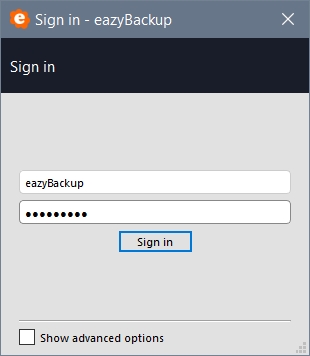
Backing up (Files and Folders) The first step in backing up your files is to create a "Protected Item".
Go to the "Backup" tab and click "+ Add Protected Item". Name this Protected Item and choose the "Files and Folders" for backup "Type".
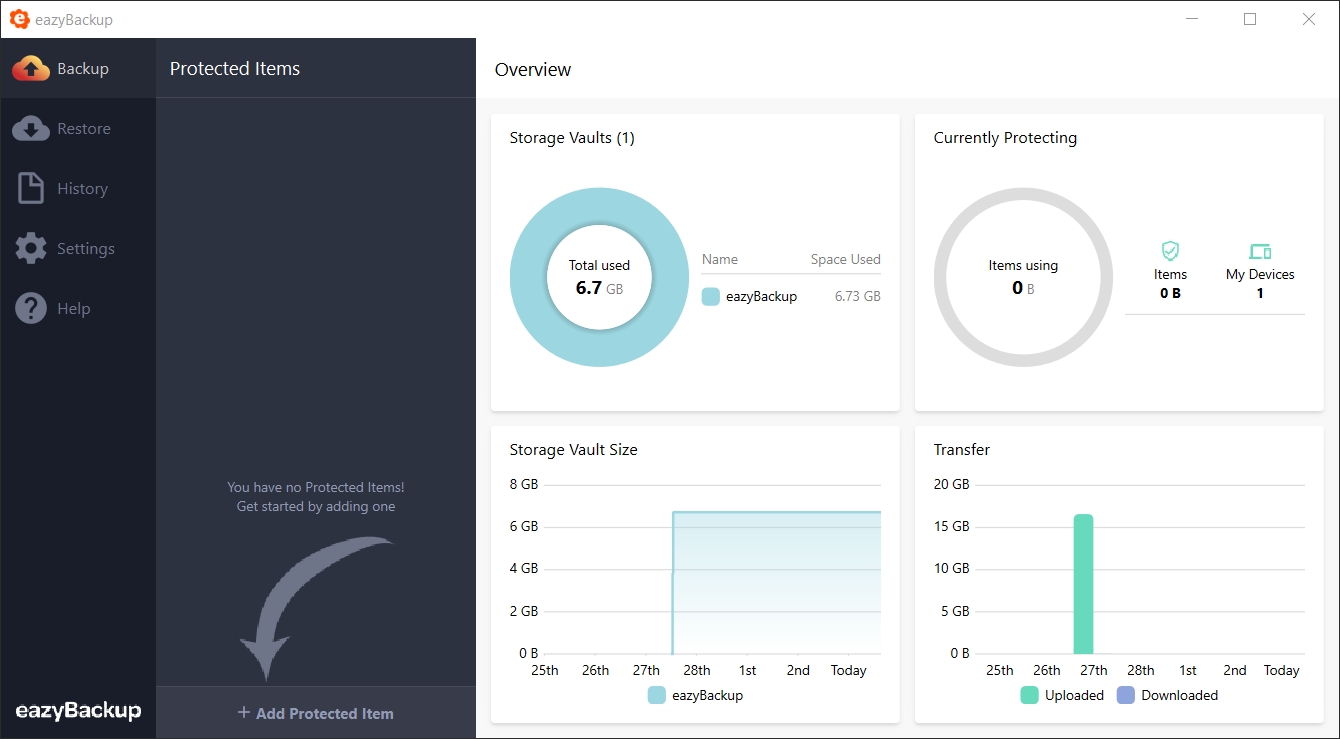
Select the type of backup Name the new Protected Item and choose "Files and Folders" for the Backup Type.
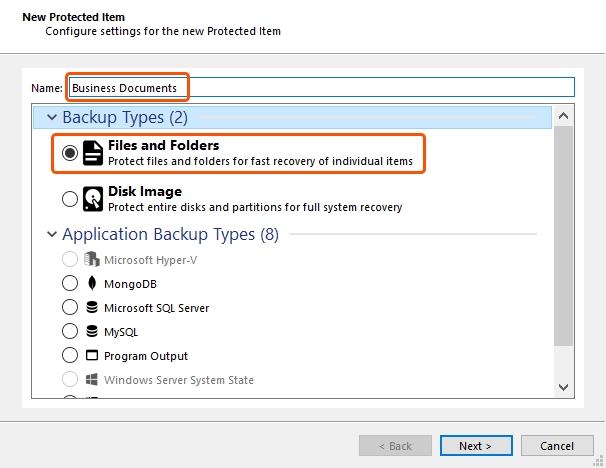
Select items to backup Add the items you would like to include in your backup.
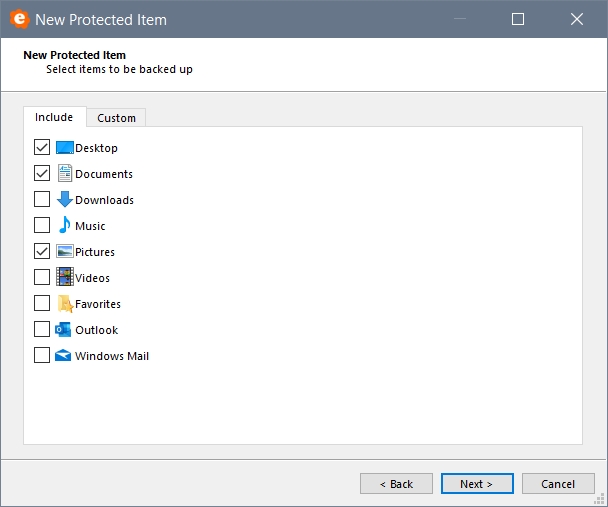
Schedules eazyBackup can run backup jobs automatically on a schedule. It is recommended to automate your backups on a regular schedule.
Click the "+" button to add a new schedule.
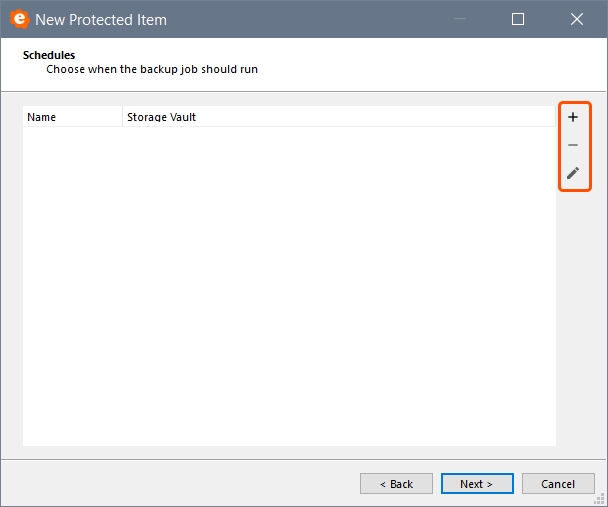
General Schedule Options
From the 'General' tab enter a name for the new schedule. You can have multiple schedules for a single protected item, for this reason it helps to give it a name.
When a schedule is due to run, the backup job will run automatically to the selected Storage Vault.
You can also configure advanced backup runtime options, such as the following:
Skip if already running. If this option is enabled, and another backup job is known by the Server to exist for the same Protected Item and Storage Vault in "Running" status, then this backup job will be skipped. Skipping a backup job creates a log entry for the job in "Skipped" status.
Cancel if still running after. If the backup job exceeds this time limit, the backup job would be cancelled.
Limit Storage Vault Speed. This option allows you to limit the total speed to the Storage Vault. The speed limit applies to the total combined read/write bandwidth.
Limit backup to use only 1 disk thread. eazyBackup uses multithreading to improve performance. On some machines, this can impact PC performance. If you are experiencing low system performance while the backup job is running, you can try to enable this option.
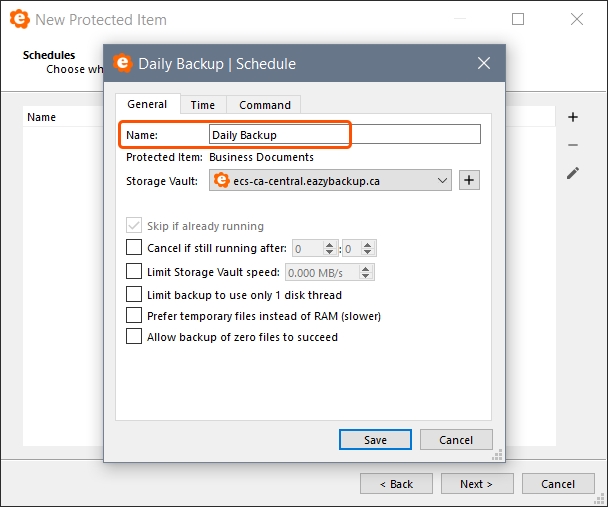
Schedule times
You can configure the times when this schedule will be executed. You can add multiple times to the same schedule.
The available time-based schedule frequencies are:
Hourly. The schedule would run every hour. You can choose the minutes past the hour.
Daily. The schedule would run every day. You can choose the time of day (hours/minutes). The hours are specified in 24-hour time, from 0 to 23.
Weekly. The schedule would run every week. You can choose the day of the week, and the time of day (hours/minutes).
Monthly. The schedule would run every month.
Once only. The schedule would run only when the specified date and time is reached.
The available event-based schedule frequencies are:
Also run when PC starts. The schedule would be initiated immediately after the PC boots.
Also run when PC starts, if the last job was Missed. The schedule would be initiated immediately after the PC boots if the last backup job for this Protected Item and Storage Vault pair was in Missed status. This allows you to "catch up" missed backups for PCs that are only online at irregular intervals (e.g., laptops).

Retention
"Retention" is the concept of classifying backed-up data, to determine what data should be kept, and what data can be safely removed.
You may choose to keep the last 30 days of backed-up data, or all data from the last 100 backup jobs; but any data older than this is unlikely to be useful and can be safely removed.
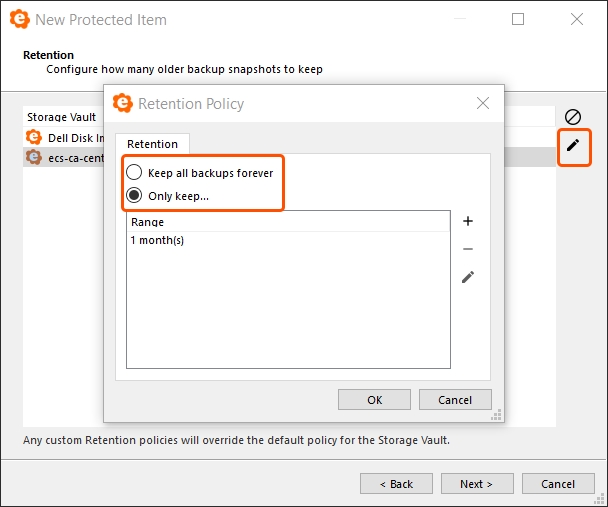
Start your first backup
Click "Finish" to complete the setup wizard. You can also choose to check the box to run your first backup immediately.
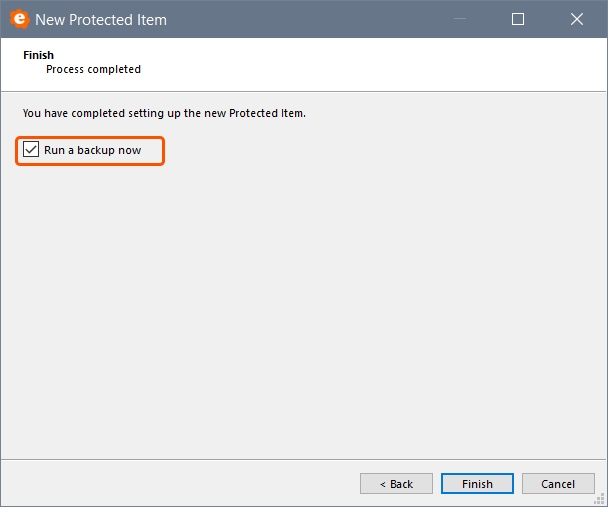
Last updated
Was this helpful?